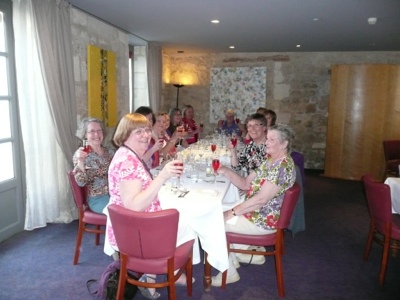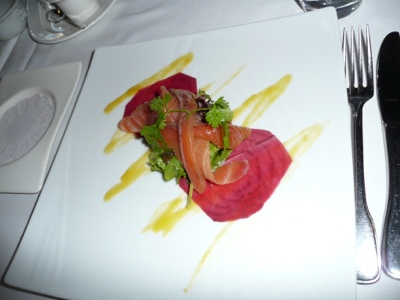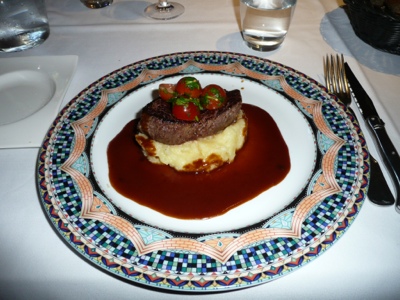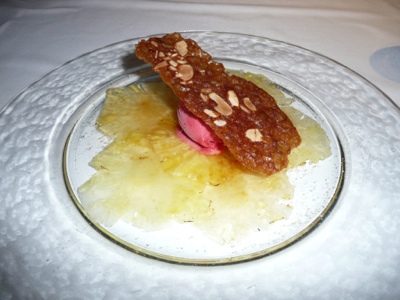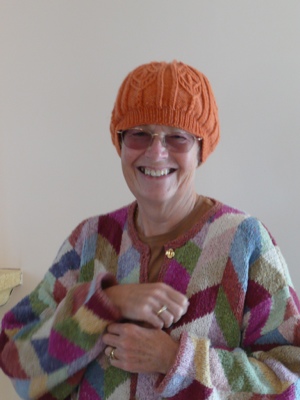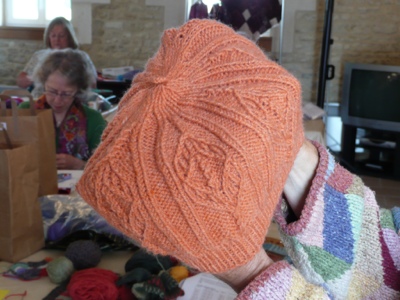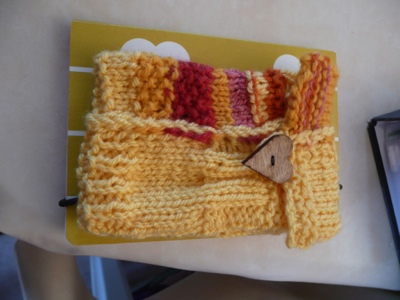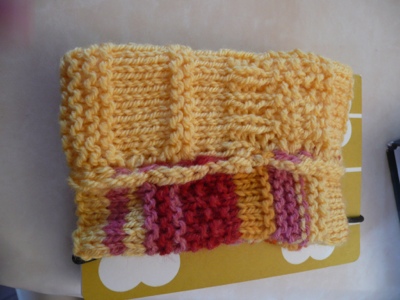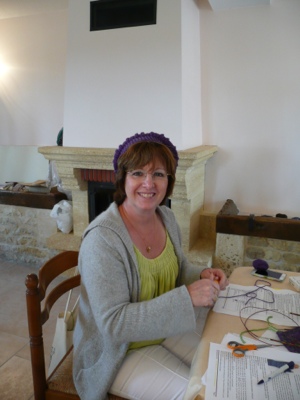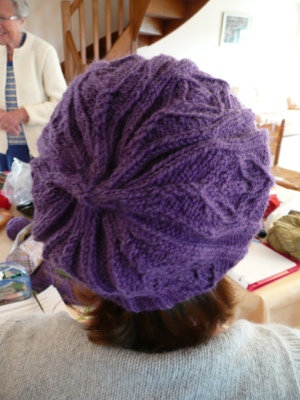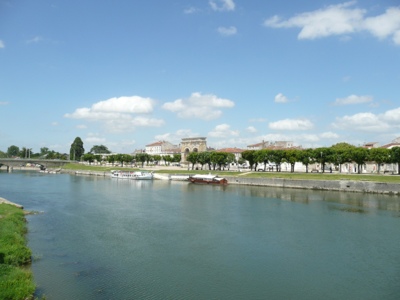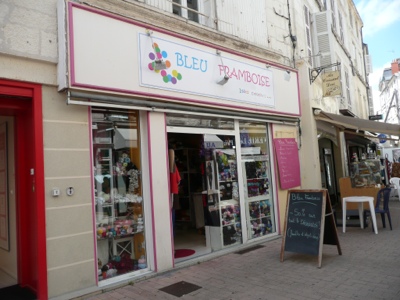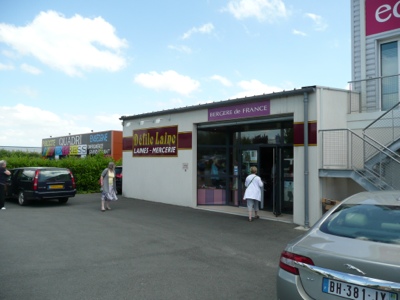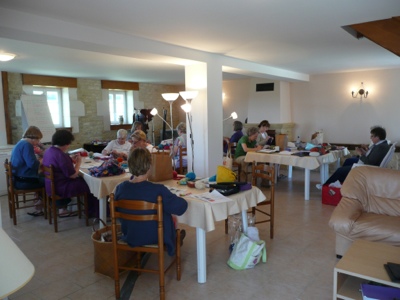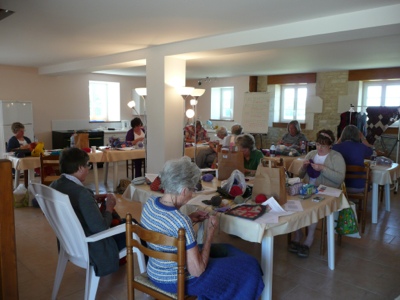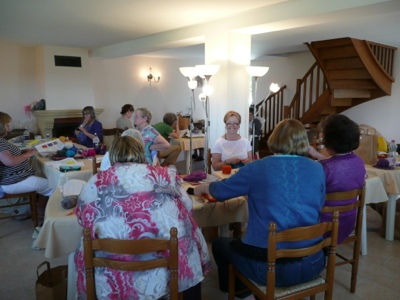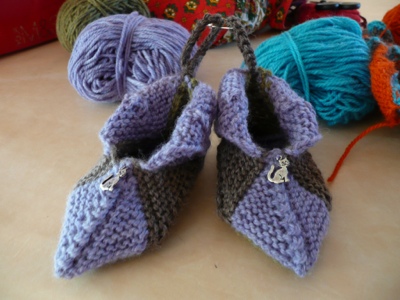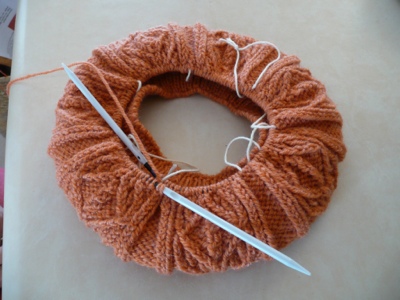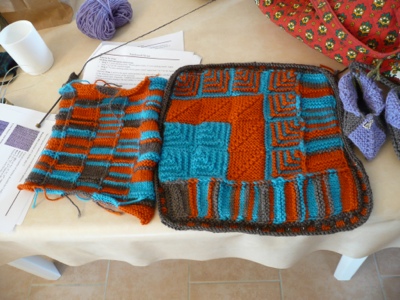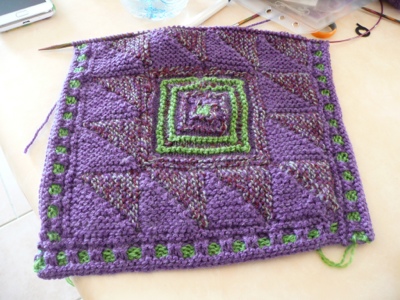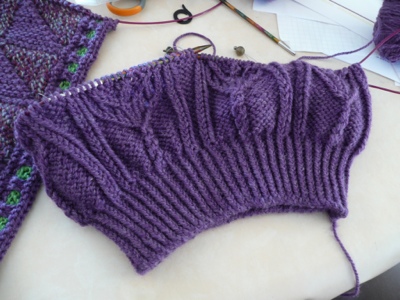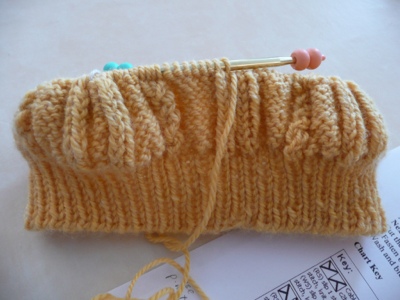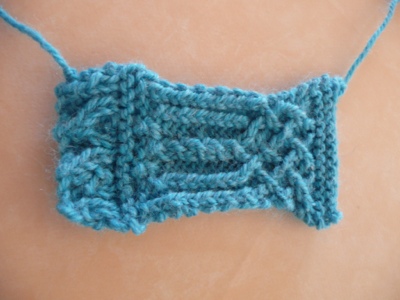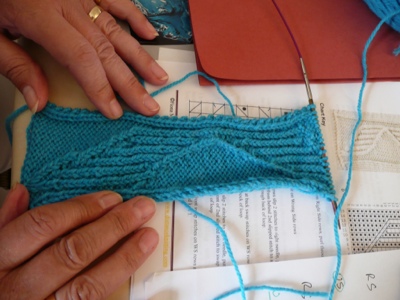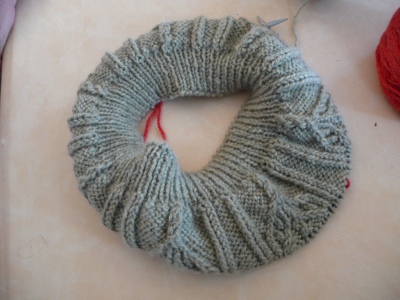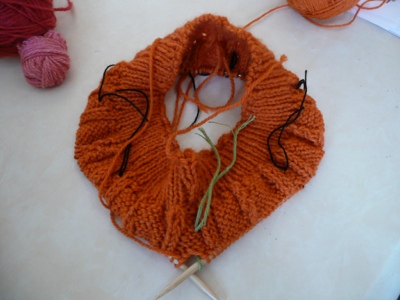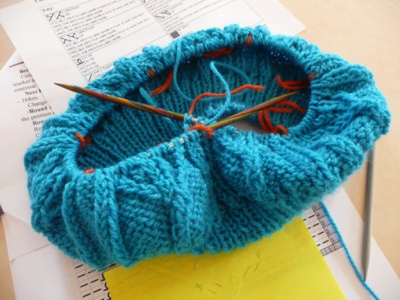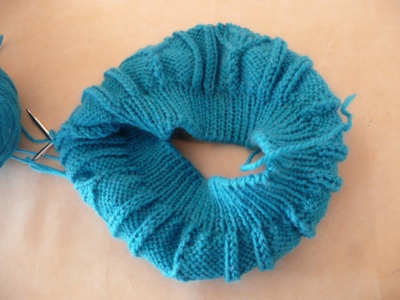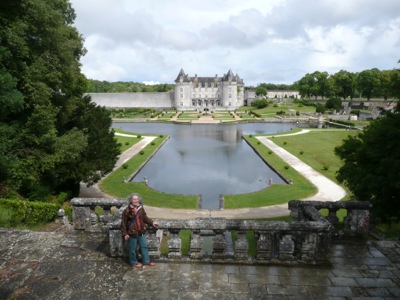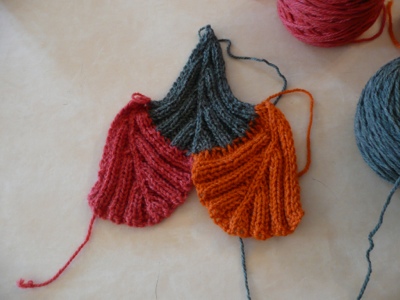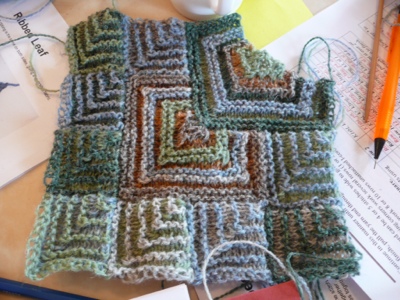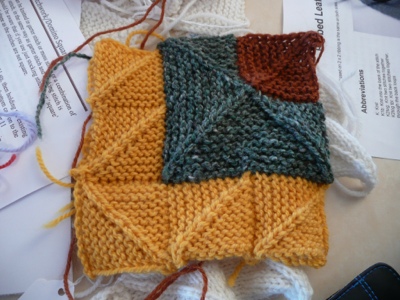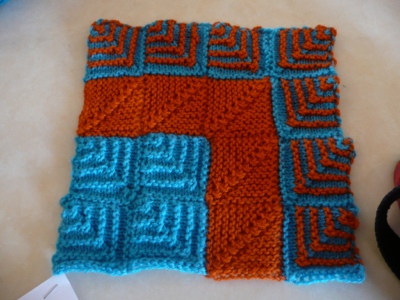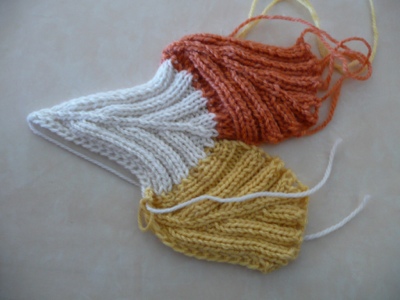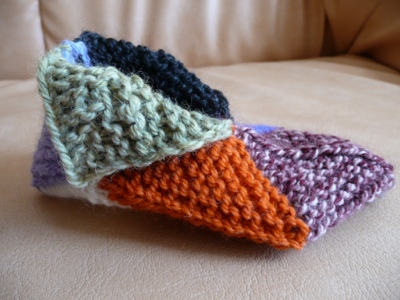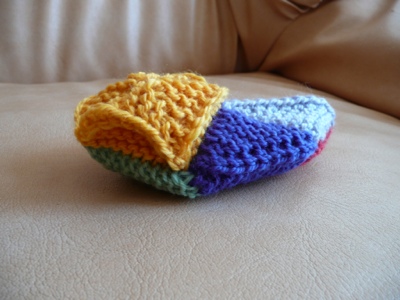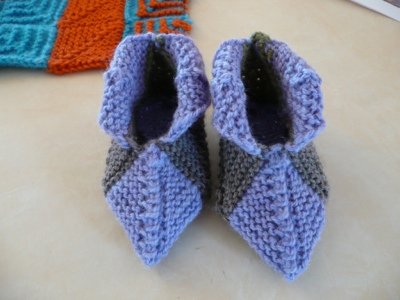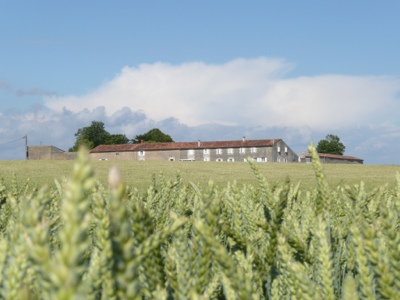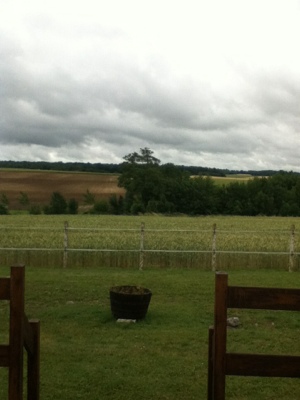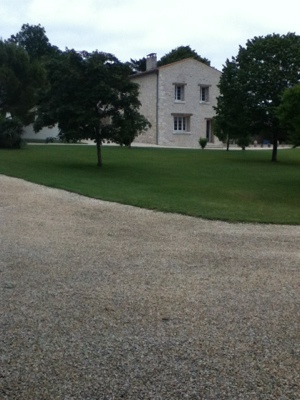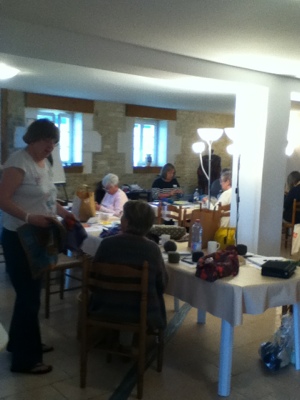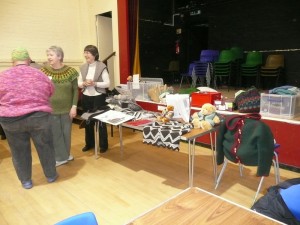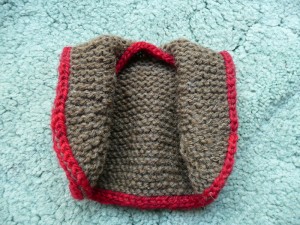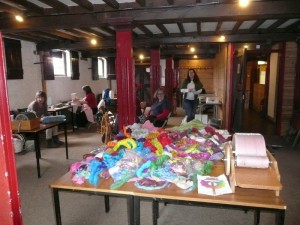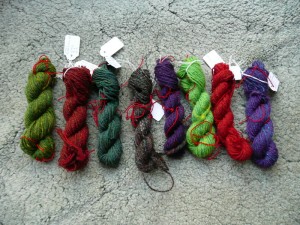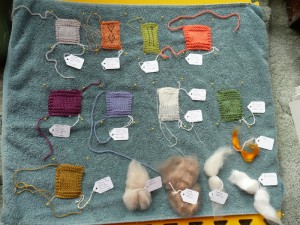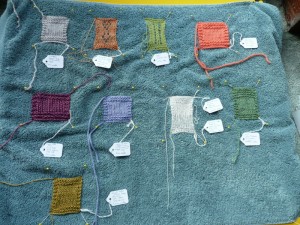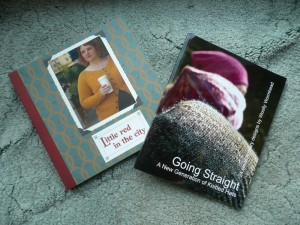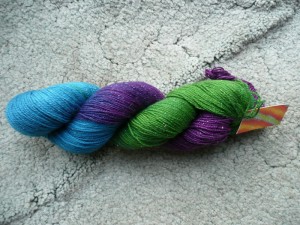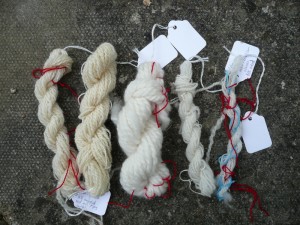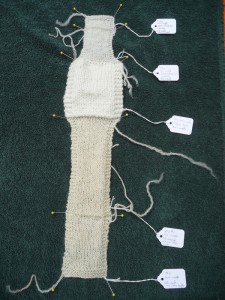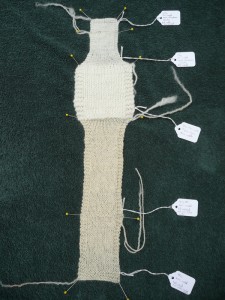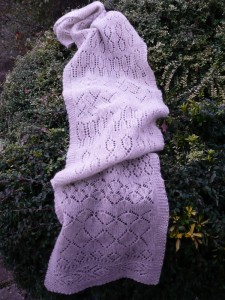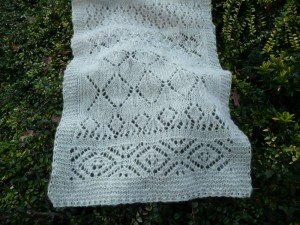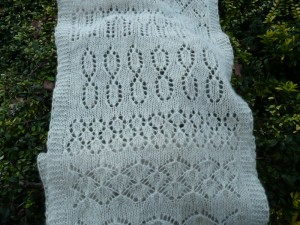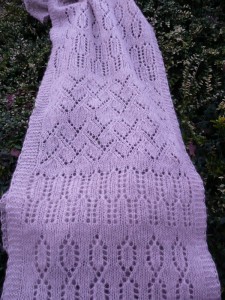Saturday 20th August began fairly early for Mummy and I. After collecting together all our knitting bits and pieces we hopped in the car and drove to Marlow Bottom, Bucks, to help Jill, Rosie, and Jill’s husband Roy get the hall arranged for our Patchwork Knitting Workshop. Sue, one of the attendees, and her husband also very kindly arrived early to help us. The hall is a lovely size, and very convenient, but unfortunately this year we discovered when we arrived that they had just painted all the woodwork the day before, and the place stank of paint 🙁 Something we were not very happy about, especially since Jill booked the hall months ago so they certainly had plenty of warning that we were coming.
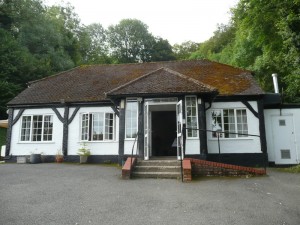
At 9 I popped to the station to pick up Mary, one of the other attendees, and then once we were back and everyone had arrived and got themselves installed we started a lovely day of knitting at 9.30.
Here are some of the attendees in action, although this was actually taken later in the day:
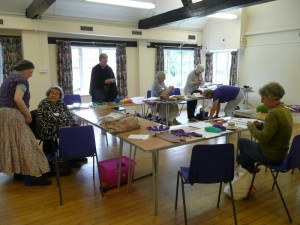
The theme for this year’s workshop was chevrons. In his books Horst calls these Herringbone. So we started off with chevrons, either on their own or joined to mitred squares, depending on what each person was interested in. After a tea break (very well orchestrated by Roy), we then looked at triangles, to fill in the space at the top of a chevron, or between two mitred squares on the diagonal. We then got onto different methods of joining as you go. We started off with joining one strip you are working on to one you have already finished, in three different ways, and then went on to three-needle cast-off for joining two already worked pieces after lunch.
Here is Penny’s sample, showing a mitred square, two chevrons, triangles, and a knitwise join:
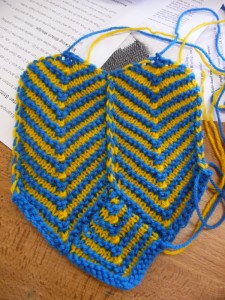
Lunch was again very well organised by Roy. He took all our orders during the morning and then went out to the Fish and Chip shop to collect them just before we broke for lunch. We had a lunch table set up away from the knitting so people could leave their work in progress as it was without having to pack up, and yet we could all sit together and chat over our meal.
After lunch we continued with joining methods, and then moved on to making a paper template for a jumper, to your own measurements. This is a method that Horst advocates, that you make a paper template and then can keep trying your knitting up against it until it is the right size and shape. It lends itself well to knitting in modules, or also freeform knitting and crochet. However he doesn’t really show you how to create the template from your own measurements. So we talked about how to take your measurements, and where you need to be measuring, and then using the very kind and accomodating Mary as our beautiful model we measured her and drew up a template for her for a long length jumper / jacket with modified drop sleeves (also sometimes called square set-in sleeves), a round neck, and waist shaping. We only covered drop shoulders and modified drop shoulders, since really set-in sleeves can be a day’s workshop in themselves, and the two basic shapes we covered are a good introduction, and also lend themselves well to patchwork knitting.
After everybodies brains were filled up with measuring and calculating, we moved on to show and tell. I love to see all the creative things people have been working on since we last saw them. So many great ideas, and beautiful knitting. Very inspirational.
Here is the table full of items ready for show and tell:
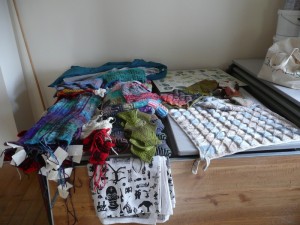
To finish off the day Jill and Rosie had had a great idea for how to go about planning your next patchwork knitting project. Armed with a block of post-it notes, they drew on the row lines for mitred squares, and cut some to make triangles. You can then play around arranging them on a convenient surface until you have a pattern you like, before you start the knitting.
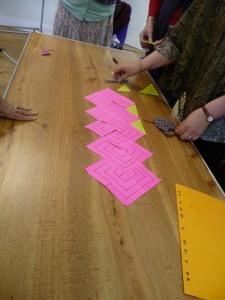
The tidying up went surprisingly quickly, and after hardly any time we were waving everyone off and saying hello to my aunt and uncle who had come to pick Mummy up for the next leg of her round Britain tour.
It was a lovely day, I hope that the other attendees enjoyed it half as much as I did.
